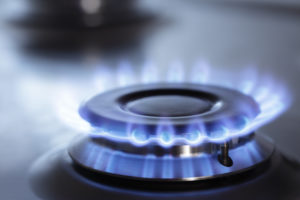 Natural gas hovered close to 6-month highs for a second day, ahead of a government report that may show a larger-than-average withdrawal in US inventories last week. Weather forecasts called for freezing temperatures across most of the US densely populated areas.
Natural gas hovered close to 6-month highs for a second day, ahead of a government report that may show a larger-than-average withdrawal in US inventories last week. Weather forecasts called for freezing temperatures across most of the US densely populated areas.
On the New York Mercantile Exchange, natural gas futures for settlement in January traded at $3.976 per million British thermal units at 10:10 GMT, up 0.39% on the day, having reached a 6-month high at $4.016 per million British thermal units on Tuesday. Prices swung between day highs and lows of $3.987 and $3.951 per million British thermal units, respectively. The energy source ended the Wednesday session mostly unchanged, leaving its weekly gain at 0.5%. Prices settled 4.5% higher last week after surging 6.4% in the preceding two five-day periods.
NatGasWeather.com predicted a bitter cold blast to swing through the Plains and Midwest, leaving areas of moderate to heavy snow and strong wind, especially across the Great Lakes region. The impacted regions will experience strong winds, heavy snow and the coldest temperatures for the season, which will increase demand for natural gas. Early next week, bitter cold temperatures will make it deep into the Southwest and California. The current situation in much of the West US and the Plains are temperature anomalies reaching as high as 20-30 degrees Fahrenheit colder than average. The cold air will also impact the Midwest later in the day. The Eastern US will experience the freezing temperatures by the end of this week as well, leaving much of the nation under snowfall, freezing cold temperatures and strong winds. In the Northern Plains highs will probably not get above 0 degrees Fahrenheit during the next few days. Wellhead issues are possible in parts of New Mexico, Texas and Oklahoma due to the bitter cold temperatures.
NatGasWeather.com’s extended forecast for the week ending December 18th called for a reinforcing shot of Arctic air, which will sweep across the country early next week. There is likelihood of few winter storms over the northern and central US, with areas of accumulating snow and ice. The website imparted that a higher-than-normal natural gas draws are expected during the week, with many of the highest consumption states experiencing cold conditions and temperature anomalies greater than 20-25°F. After December 16th through December 18th the jet stream will reorganize and probably no additional Arctic blasts will make it deep into the US territory, by impacting only parts of Southern Canada.
According to AccuWeather.com, the low in Columbus on December 11th will be 19 degrees Fahrenheit, beneath the average of 28 degrees, while readings in Lansing will be 16 degrees Fahrenheit, 8 degrees below average. The low in Albany on December 11th will be 17 degrees Fahrenheit or 6 degrees beneath average.
When cold weather is expected, natural gas surges as increased electricity demand to power air-conditioning calls for more supply of the fuel, which is used for a quarter of U.S. electricity generation. Above-average readings in the winter season have the opposite effect. Consumption usually picks up from November through March. According to the Energy Information Administration, power generation accounts for 32% of U.S. gas demand and 49% of U.S. households use the energy source for heating.
Last week, an EIA report showed that total gas held in U.S. underground storage hubs equaled 3.776 trillion cubic feet and were 2.6% below last year’s amount of 3.876 trillion. However, the surplus over the five-year average inventories widened to 0.5% from 0.4% a week earlier.
Market players awaited the release of EIA’s latest US inventories report, due today. Early withdrawal estimates for this week’s storage data range from 109 billion cubic feet to 148 billion cubic feet, compared to a drop of 62 billion cubic feet during the same week a year earlier. If confirmed, this would sharply exceed the five-year average decline of 41 billion cubic feet, providing further support to the market.
Stephen Schork, the president of the Schork Group Inc., an energy consultant in Villanova, Pennsylvania, said, cited by Bloomberg, “Heating demand is moderate this week but is expected to surge next week with temperatures forecast to plunge, the market is looking for a massive draw of gas from inventories”.





